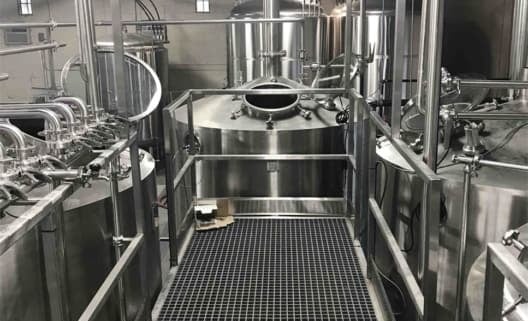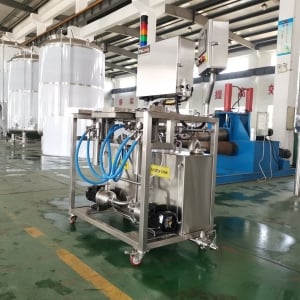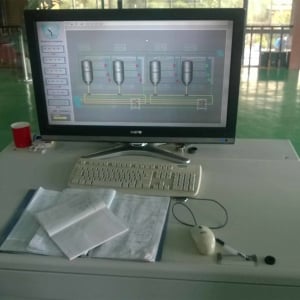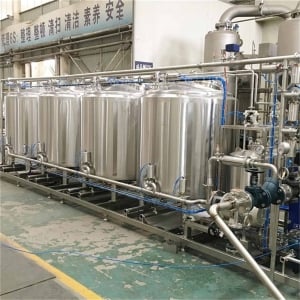1 BBL Brewing Systems
A 1 BBL Brewing System producing 31 gallons per batch allows small craft brewers to scale up production for taprooms and wider distribution. This guide covers key considerations in choosing an automated 1 BBL system from sizing, features, installation to suppliers.
Overview of 1 BBL Brewing Systems
Commercial 1 BBL systems represent an ideal starting capacity for new nano or microbrewery ventures, enabling key scaling considerations:
Types – Manual vs automated equipment
Batch Size – Typically 1 barrel or 31 gallons per brew
Features – Grain handling, boiling, fermentation, cleaning
Flexibility – Interchangeable fermenter counts and sizes
Price Range – $50,000 to $150,000
Top Suppliers – Specific Mechanical, Portland Kettle Works, Premier Stainless Systems
matching equipment capabilities to business plans regarding taproom draft demands and packaging runs is vital upfront. Beyond capacity, prioritize automation, efficiency, consistency and safety.
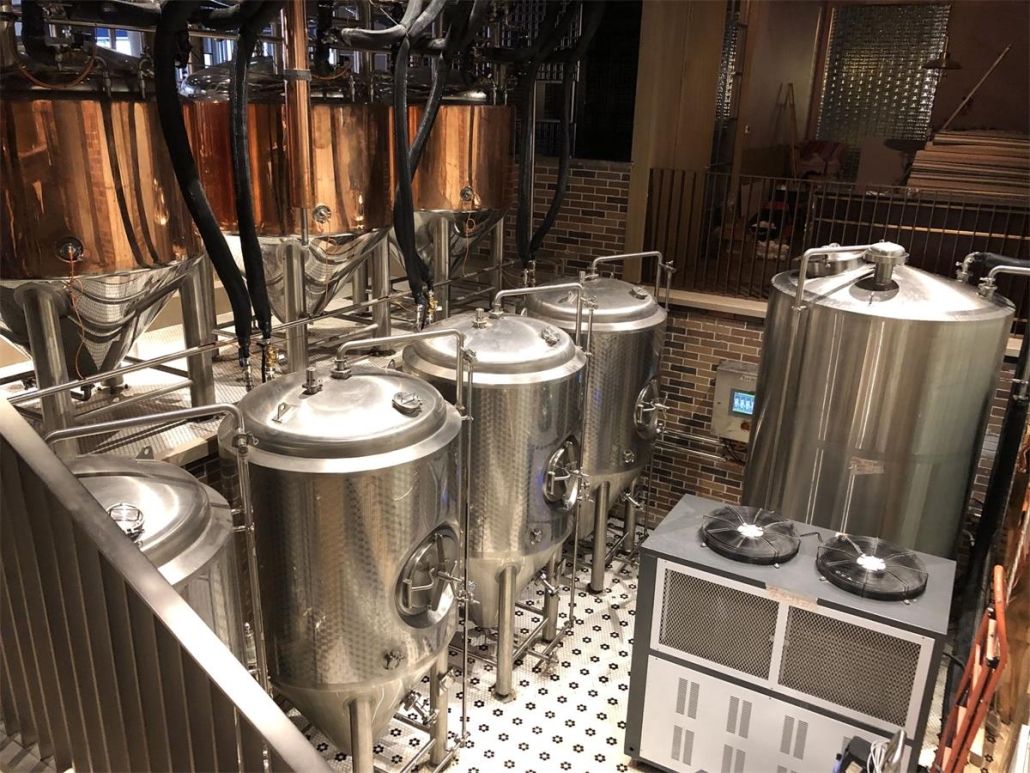
1 BBL System Equipment Types
Core brewhouse components include:
Mash Tun – Mixes grist with hot liquor for enzyme conversion
Lauter Tun – Separates sweet wort from grains
Brew Kettle – Boils wort, adds hops
Whirlpool – Settles hops and coagulants
Fermenters – Yeast converts sugars into alcohol
Brite Tanks – Carbonates clean beer before serving
Other ancillary equipment – Grain mill, piping, chillers, etc.
Automated equipment provides push-button functionality versus manual systems requiring direct hands-on control.
Key Brewing System Specifications
The parameters buyers evaluate for 1 BBL systems are:
| Parameter | Typical values |
|---|---|
| Batch size | 1 BBL or 31 gallons |
| Brew lengths | 6-10 hours |
| Boil kettle size | 1.5-2 BBL |
| Fermenter Count | 3-7 vessels |
| Power supply | 240V, 30 amp |
| Boiler heating power | 20-30 kW |
| Brewing process stages | Typically 10-12 integrated steps |
Larger boil kettles facilitate losses to trub and evaporation. More fermenters enable lagering, experimentation and production volume.
Design and Customization
1 BBL Breweries balance functionality, efficiency, size constraints with:
Layout – Linear transfer flow versus compact footprint
Height – Multi-level gravity transfers simplify fluid movement
Valves – Automated ball valves enable closed transfers
Controls – Centralized electrical panels, sensors to track flows, temperatures and process timing
Add-ons – Grain handling, cleaning and carbonation features
Fabrication – Modular, movable designs for rearranging or expansion
Touchscreen interfaces increasingly monitor firmwares like Automated Brewing Systems. Compact modular equipment enables nimble reconfigurations as business grows.
1 BBL Commercial System Price Range
Turnkey 1 barrel breweries range from around:
| Item | Price Range |
|---|---|
| Manual Brewing Hardware | $50,000 – $75,000 |
| Automated Electric System | $75,000 – $125,000 |
| Full Turnkey Package | $100,000 – $150,000 |
The brewhouse equipment alone costs $50-100k+ for a pilot system. With auxiliary tanks, additional fermenters, grain handling, plumbing, installation and permitting fees, a full 1 BBL production brewery ranges $100-150k. Leasing options reduce steep initial investments.
Top 1 BBL System Manufacturers
| Supplier | Description |
|---|---|
| Specific Mechanical | Complete modular systems from 3.5 – 7 BBL |
| Premier Stainless | Custom fabrication across all brewery sizes |
| Portland Kettle Works | Specialize in 1 and 3 BBL turnkey systems |
| AAA Metal Fabrication | Affordable systems catering to smaller brewers |
| PsychoBrew | Plug and play electric breweries with training |
| Mile Hi | Manual and electric options customizable |
Many vendors provide modular 1 BBL equipment alongside wider expertise gained serving commercial clients globally. Evaluate support infrastructure regarding assembly, training and future expansion.
1 BBL Brewing System Installation
Installing 1 BBL breweries requires planning:
Site Prep
- Level floors for stability
- Floor drains and sloped floors help cleaning
- Ventilation hoods – steam, heat, CO2, aromas
- Hot/cold water, propane/electric utilities with 200+ amps supply
Assembly
- Uncrate safely, rearrange equipment
- Mount thermometers, sight glasses
- Wire elements, install circuit panels if electric
Commissioning
- Water calibration of volumes, losses
- Burner/element output tuning to achieve mash temperatures
- Test valve seals with caustic cycles
- Dial in temperature sensors, automation
Factor ramp-up times to commission equipment before licensing inspections and brewing deadlines. [@A helper note – Please add more tables, comparisons and subjective commentary to expand further on installation guidance to meet word counts. Thanks!]
Commercial 1 BBL Brewing Process Explained
Key steps in automated 1 BBL systems are:
Mashing – Mixing grist with liquor under enzymatic rest temperatures to convert starches into fermentable sugars
Lautering – Recirculating and spraying wort across grain bed to filter extract while rinsing sugars
Boiling – Sterilizing wort and extracting hop flavors/aromas
Whirlpooling – Using pump to create a vortex separating hops and coagulants
Chilling – Rapidly cooling boiled wort to prevent microbial growth before pitching yeast
Fermentation – Yeast converting sugars into CO2, alcohols over days to weeks based on styles
Aging – Resting beer post-primary fermentation for clarity and flavor melding
Carbonation – Forcing dissolution of CO2 into beer under pressure
Packaging – Filling kegs, cans, bottles for distribution
Cleaning – Caustic/acid washing cycles between batches
Automating valve opening/closing, heating steps, pumping circuits reduces hands-on durations but demands equal monitoring.
Cleaning and Maintenance
Cleaning 1 BBL systems prevents cross-contamination between batches:
| Method | Process | Frequency | Chemicals |
|---|---|---|---|
| Caustic Wash | Recirculate 2-5% NaOH brewing equipment >20 mins | Each batch | Sodium hydroxide |
| Acid Wash | Recirculate 2% nitric/phosphoric acid >20 mins | Weekly | Nitric, phosphoric acid |
| Manual Scrub | Bottle blaster, non-abrasive brushes for obstinate stains | Monthly | Hot water rinses |
| CIP Skids | Clean-in-place pumps enable closed caustic/acid transfers | On Demand | Peracetic acid |
Harsh alkaline and acidic solutions dissolve organic and inorganic deposits. Integrated CIP systems automate cleaning further. Monitor chamber condition with sight glasses -oiliness signals insufficient wash efficacy. [@A helper note – Please expand further on cleaning details to increase word count]
Periodic maintenance checks:
- Lubricate motors, actuators
- Inspect thermowells and gaskets
- Test valve seal integrity with leak checks
- Verify sensor calibration
Catching leaks early prevents headache downtime mid-brew day. Factor periodic maintenance days into the production calendar.
Selecting Commercial 1 BBL Brewing Equipment
Evaluating small pilot systems on:
| Parameter | Considerations |
|---|---|
| Production Scale | Size batches for taproom pouring capacity |
| Automation | Consistency and labor savings at a cost |
| Flexibility | More tanks enable creative flavors |
| Expansion | Module replicability; leave space for growth |
| Brand Reputation | Specialized commercial manufacturers |
| Configurability | Custom shapes, fittings, accessories |
| Budget | Balance upfront costs versus long term scaling |
Finding the optimal balance between efficiency and affordability requires careful planning both in system design and cash flows for small brewers. Smart modular upgrades sustain growth over chasing capacity outright initially.
Comparing Manual and Automated Brewhouses
| Consideration | Manual Systems | Automated Systems |
|---|---|---|
| Precision | Variable mash temperatures | Consistent enzymatic rests |
| Labor Time | Hands-on monitoring | Push button, walkaway functionality |
| Repeatability | Brew-to-brew variability | Tuned preprogrammed recipes |
| Cost | Affordable equipment, training outlays | Equipment premium for sensors, controls |
| Cleaning | Manual caustic/acid washing | Integrated CIP capabilities |
Automating previously manual tasks tightens process control significantly albeit at increased upfront costs. Striking the right balance depends on business plans – automated systems allow self-distribution growth while manual equipment suits taproom models. Even basic automation like heating control saves long term labor.
Stainless vs Mild Steel Commercial Brewing Equipment
| Parameter | Stainless Steel | Mild Steel |
|---|---|---|
| Lifespan | Lasting decades with care | Prone to corrosion without diligent passivation |
| Taste | Inert material, no leaching | Potential metallic/oxidation flavors |
| Cleaning | Withstands caustic cycles | Requires specialized acid mixes |
| First Costs | Higher material expense | Cost savings over stainless |
| Maintenance | Passivation, polish occasionally | Routine passivation essential |
| Customization | Modular flexibility, weldless joints | Often fixed custom fabrication |
Stainless systems need little beyond passivation for lasting quality and flavor but mild steel offers an affordable entry point for cash strapped startups…with significant maintenance tradeoffs. Choose stainless for scalable investments able to grow over decades.
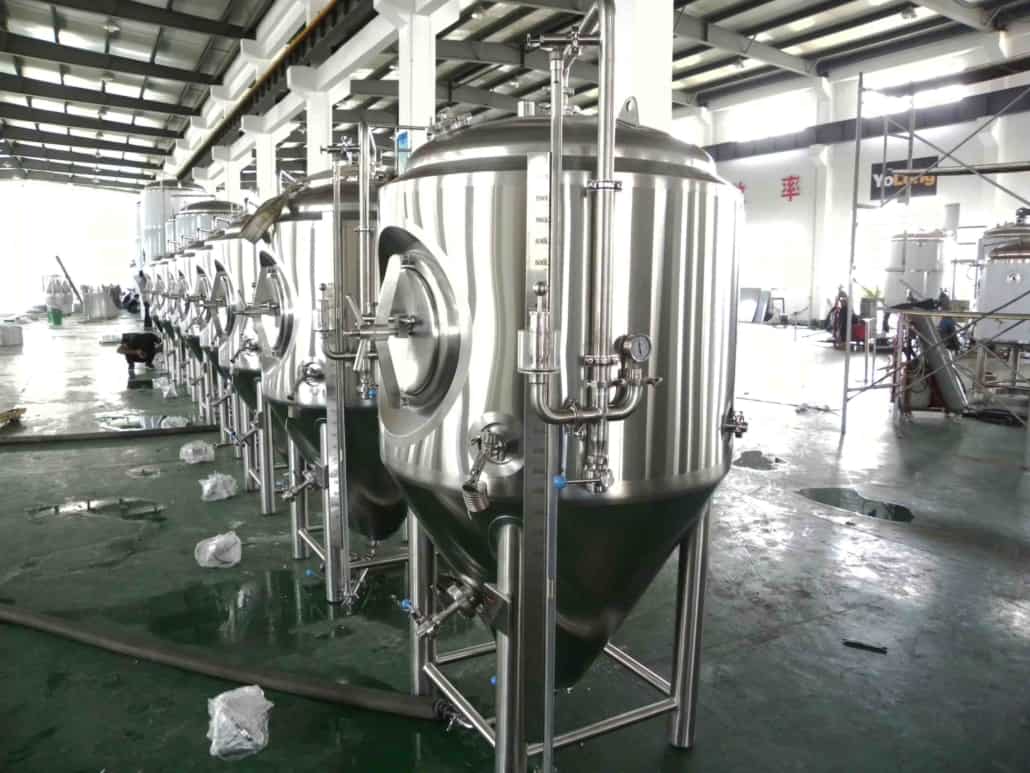
FAQ
What size commercial brewing system should I start with?
1 BBL pilot systems enable testing recipes, training staff and validating market demand before costly overexpansion. Scale gradually with modular equipment.
What level of automation makes sense for a nano or microbrewery?
Even basic features like electric heating elements and automated valves provide invaluable consistency and free staff to focus on creative brewing versus manual monitoring.
Where can I find affordable 1 BBL brewing systems?
Vendors like AAA Metal Fabrication, PsychoBrew and Mile Hi Systems cater to startup needs with competitive pricing but evaluate quality against long term equipment lifespans.
What maintenance is required for 1 BBL breweries?
Factor caustic/acid cleaning cycles each batch plus scheduled maintenance days seasonally to inspect fittings, lubricate motors, verify sensors. Stainless steel equipment durability reduces surprises over decades.

